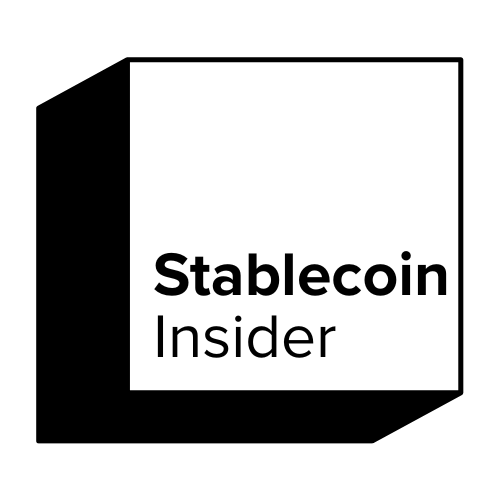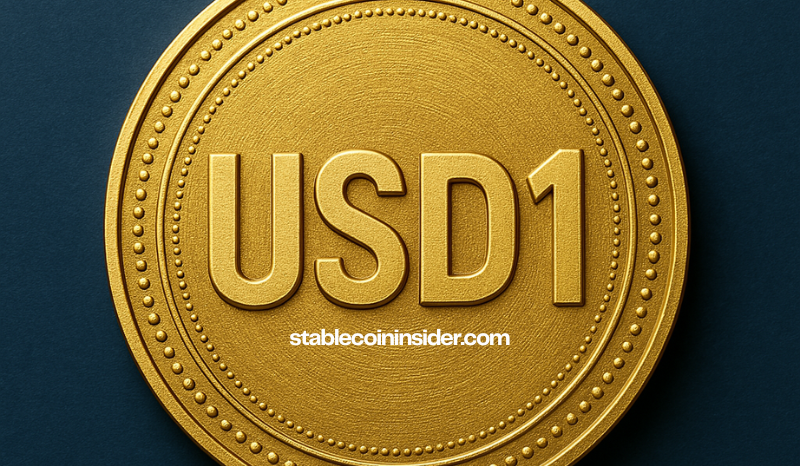USD1 is the latest entrant to the evolving stablecoin market, launched by World Liberty Financial — a decentralized finance (DeFi) initiative backed by President Donald Trump and his family.
As a stablecoin pegged to the U.S. dollar and backed by short-term U.S. treasuries, cash equivalents, and USD deposits, USD1 aims to bridge the credibility of traditional finance with the innovation of blockchain-based ecosystems.
In a market where the total capitalization of dollar-backed stablecoins has surged by over 46% in the past year, understanding the unique position and structure of USD1 is crucial for crypto users, businesses, and investors.
What is USD1?
USD1 is a U.S. dollar-pegged stablecoin developed by World Liberty Financial, a crypto banking venture supported by the Trump family.
It is issued by World Liberty Bank and is fully backed by conservative financial instruments such as U.S. Treasury bills, cash, and U.S. dollar deposits. Unlike algorithmic or decentralized stablecoins, USD1 is designed with a strong emphasis on compliance, institutional trust, and regulatory oversight.
World Liberty Financial has described USD1 as a safe and secure asset that can be confidently used by institutional investors and sovereign entities. Since its October launch, the project has raised $550 million through two token sales, attracting over 85,000 verified participants and high-profile investors like Tron founder Justin Sun.
How USD1 Works
USD1 maintains a 1:1 peg to the U.S. dollar by holding collateral in government-backed securities and liquid fiat reserves. The issuance and redemption process is managed via smart contracts on both Ethereum and Binance Smart Chain, providing decentralized access with institutional-grade assurances.
This dual-chain launch enhances its usability in both DeFi and centralized finance applications. The token can be used for cross-border payments, collateral in decentralized applications, and stable trading pairs.
According to co-founder Zach Witkoff, “USD1 provides what algorithmic and anonymous crypto projects cannot — access to the power of DeFi underpinned by the credibility and safeguards of the most respected names in traditional finance.”
Key Features of USD1
- Transparency and Audits: Regular third-party audits ensure reserve integrity and compliance.
- Regulatory Compliance: Operates under financial licenses and regulatory frameworks.
- Blockchain Support: Launches initially on Ethereum and Binance Smart Chain.
- Low Transaction Costs: Offers efficient and scalable transaction options.
- Security: Uses smart contracts and cold storage for secure asset management.
- Institutional Integration: Tailored for sovereign wealth funds, banks, and large corporations.
How to Buy, Store, and Use USD1
USD1 will be available through select centralized exchanges, over-the-counter (OTC) desks, and potentially through decentralized exchanges (DEXs). Users can store USD1 in any wallet that supports Ethereum or BSC tokens, including MetaMask, Ledger, and Trust Wallet.
Redemption will be facilitated via the World Liberty Financial platform or affiliated partners, enabling users to convert their tokens into fiat currency or treasury-backed equivalents.
USD1 vs. Other Stablecoins
USD1 enters a competitive field dominated by Tether (USDT), Circle’s USDC, and decentralized coins like DAI. Here’s how it compares:
- USDT: Largest by market cap but criticized for lack of transparency.
- USDC: Regulated and transparent, but more U.S.-centric.
- DAI: Decentralized and over-collateralized but susceptible to volatility in crypto asset prices.
- USD1: Combines institutional-grade reserves with blockchain accessibility. Unique political and financial support structure.
Adoption and Market Impact
USD1 has quickly gained traction due to its high-profile backing and strong investor interest. The project has already drawn institutional attention and is positioned as a key tool for maintaining U.S. dollar hegemony in digital finance. Treasury Secretary Scott Bessent recently stated that the government aims to use stablecoins like USD1 to maintain the U.S. dollar as the dominant global reserve currency.
President Trump reinforced this stance at the Digital Asset Summit, stating, “The industry will unleash an explosion of economic growth, and with the dollar-back, stablecoins, you’ll help expand the dominance of the U.S. dollar.”
Risks and Challenges
While USD1 presents many advantages, it also faces:
- Regulatory Scrutiny: Political involvement may lead to enhanced oversight.
- Counterparty Risks: As a bank-issued stablecoin, it depends on the solvency and integrity of its issuers.
- Redemption Liquidity: Market shocks could test the robustness of its reserve structure.
- Political Entanglements: With Trump family involvement and a potentially controversial financial model (up to 75% of net revenue may go to Trump-connected entities), political opposition may arise.
Future of USD1
USD1 is positioned at the center of a broader U.S. crypto policy strategy. With Trump’s executive order establishing a Strategic Bitcoin Reserve and the appointment of a crypto czar, the administration appears to be embracing digital assets more fully.
Future developments could include:
- Expansion to additional blockchains
- Integration into federal or state-level payment rails
- Becoming a foundation for tokenized U.S. government debt products
- Greater institutional use for cross-border settlement and treasury diversification
Conclusion
USD1 is more than just another stablecoin — it is a political and financial statement. By marrying the reliability of U.S. government-backed reserves with the transparency and efficiency of blockchain technology, it seeks to carve out a significant share in the global digital asset landscape.
As the stablecoin market matures, USD1’s unique structure, institutional appeal, and alignment with national policy could make it a long-term contender. Whether you’re a retail investor, corporate treasurer, or DeFi user, USD1 is a project worth watching as the U.S. dollar finds new life on-chain.
Related:

